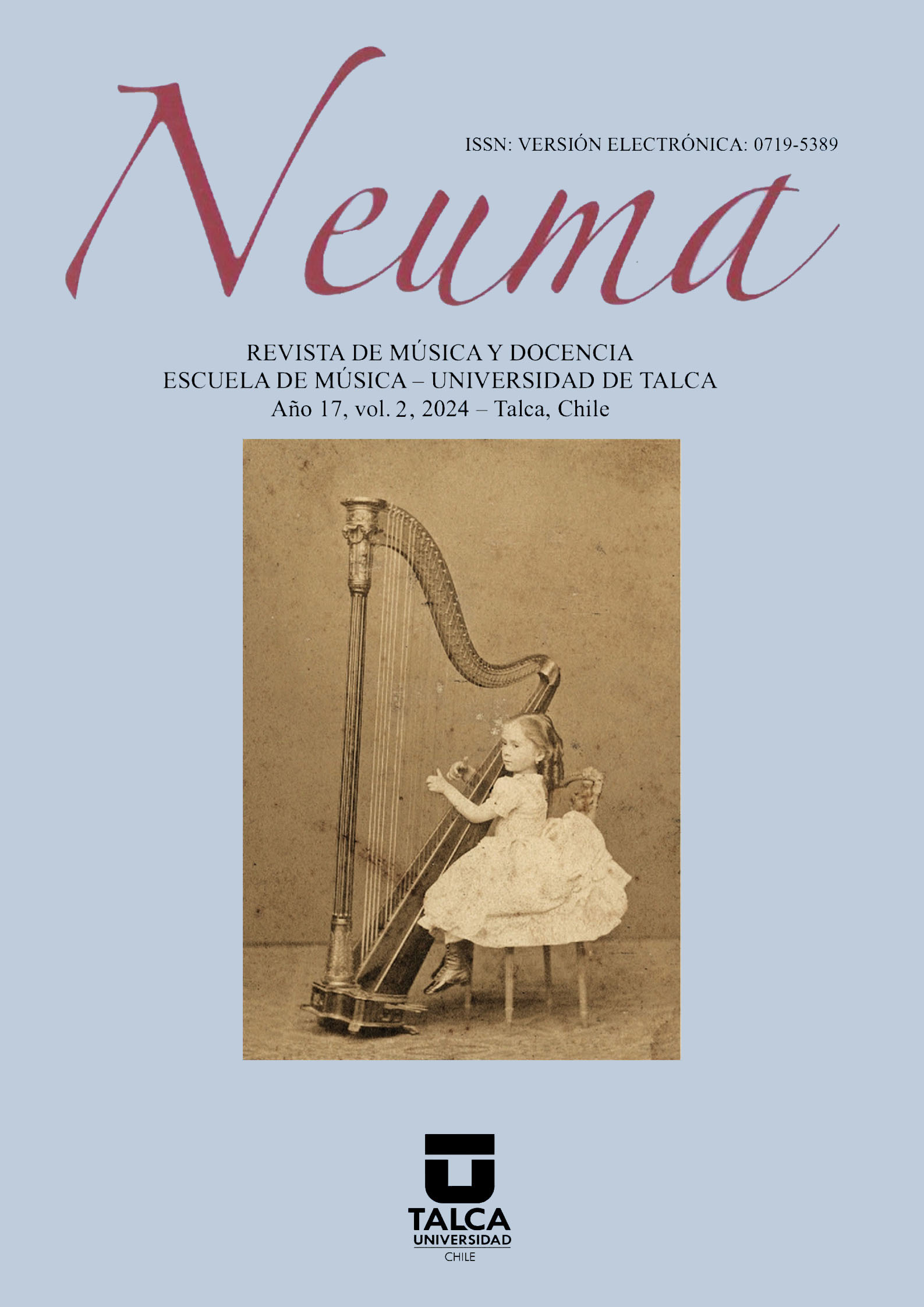Abstract
The music played on the Chilean street barrel organ reflects the cultural exchanges and intersections that have occurred over its more than 170 years of use. Its cylinders contain a blend of original European music with popular songs and local folklore, bearing witness to practices involving manipulating the device for repertoire renewal. To explore this phenomenon, we examined the music from 33 street barrel organ cylinders, analysed discographic productions, and interviewed practitioners. Through this endeavour, we shed light on a surprisingly understudied yet central element of the organilleros’ heritage: its music.
References
Bravo, Sergio (1958). “Día de Organillos”, https://www.youtube.com/watch?v=5gpkNfdHXKA.
Cárdenas, Gabriel (2011). “Configuración identitaria del chinchinero. La tensión tradición-
modernidad”. Tesis de pregrado para optar el título de sociólogo. Universidad Academia de Humanismo Cristiano.
Cárdenas, Gabriel (2017). El Patitas de Oro. La historia de Héctor Lizana Gutiérrez, el
chinchinero más antiguo de Chile. Santiago de Chile: Editorial Quimantú.
Díaz, Rafael y Juan Pablo González (2011). Cantus Firmus. Mito y narrativa de la Música Chilena de Arte del siglo XX. Santiago de Chile: Amapola Editores.
Donoso, José (1962). “Música condenada a morir”, Ercilla, 1436, pp. 4-5.
Gerstäcker, Friedrich (1854). Gerstäcker’s Travels: Rio de Janeiro - Buenos Ayres - Ride
Through the Pampas - Winter Journey Across the Cordilleras - Chili –Valparaiso - California and the Gold Fields. Londres: T. Nelson and Sons.
González, Juan Pablo y Claudio Rolle (2004). Historia social de la música popular en Chile. Santiago, La Habana: Ediciones Universidad Católica, Casa de Las Américas.
Parra, Violeta (1959). La cueca presentada por Violeta Parra. El folklore de Chile Vol. III. https://www.youtube.com/watch?v=KT-NdlGc_Tc.
Ruiz Zamora, Agustín (2001). “Organilleros de Chile: de la marginalidad al patrimonio. Apuntes para la historia social del oficio”. Resonancias, 5(9), pp. 55–86.
Sesnic, Rodolfo (1977). “Se extinguen los organilleros”. Diario La Segunda, (4 de octubre), s. p.
Silva-Ponce, René, y Rodrigo Cádiz (2021). “Música condenada a vivir: patrimonio y resiliencia del organillo chileno”. Revista Musical Chilena, 75(235), pp. 26–54.
Silva-Ponce, René; Parra Cancino, Juan y Rodrigo Cádiz (2023). “The Rebel Crank: redefining street barrel organ performance through physical gesture transgression”.
Journal of New Music Research, 51(4-5), pp. 361-377. https://doi.org/10.1080/09298215.2023.2254287.
Taylor, Diana (2015). El archivo y el repertorio. La memoria cultural performática en
las Américas. Santiago: Ediciones UAH.
Torres, Esteban (2005). “Sistematización y registro de la labor autodidacta de restauración
y conservación de organillos por Manuel Lizana”. Tesis de pregrado para optar al título de Historiador de Arte. Universidad Internacional SEK.

This work is licensed under a Creative Commons Attribution-NonCommercial 4.0 International License.
Copyright (c) 2024 Neuma (Talca)


